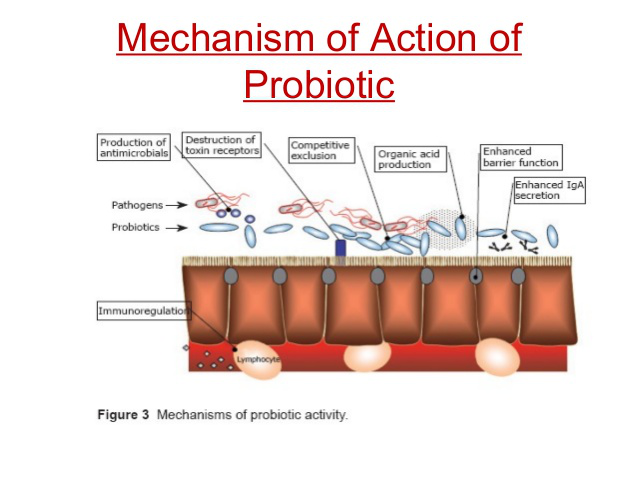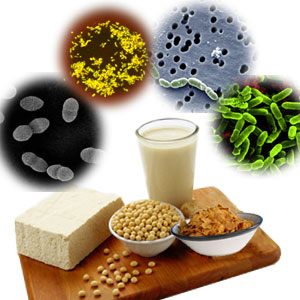Mechanisms of Probiotic Activity and Food Products
Probiotics have various mechanisms of action although the exact manner in which they exert their effects is still not fully elucidated. These range from bacteriocin and short chain fatty acid production, lowering of gut pH, and nutrient competition to stimulation of mucosal barrier function and immunomodulation. The latter in particular has been the subject of numerous studies and there is considerable evidence that probiotics influence several aspects of the acquired and innate immune response by inducing phagocytosis and IgA secretion, modifying T-cell responses, enhancing Th1 responses, and attenuating Th2 responses.
The range of food products containing probiotic strains is wide and still growing. The main products existing in the market are dairy-based ones including fermented milk, cheese, ice cream, buttermilk, milk powder, and yogurts, the latter accounting for the largest share of sales.

Non-dairy food applications include soy-based products, nutrition bars, cereals, and a variety of juices as appropriate means of probiotic delivery to the consumer. The factors that must be addressed in evaluating the effectiveness of the incorporation of the probiotic strains into such products are, besides safety, the compatibility of the product with the microorganism and the maintenance of its viability through food processing, packaging, and storage conditions. The product’s pH, for instance, is a significant factor determining the incorporated probiotic’s survival and growth, and this is one of the reasons why soft cheeses seem to have a number of advantages over yogurt as delivery systems for viable probiotics to the gastrointestinal tract. Current technological innovations provide ways to overcome probiotic stability and viability issues offering new options for their incorporation in new media and subsequent satisfaction of the increasing consumer demand. Microencapsulation technologies have been developed to protect the bacteria from damage caused by the external environment. By the introduction of a straw delivery system containing a dry form of the probiotic bacterium, beverage manufacturers can now provide it to the consumer. In addition, viable spores of a spore-forming probiotic are available in the market offering advantages during processing. In the same time, the potential of antibiotics’—substances with antimicrobial properties—production by bifidobacterial is being explored in order to be applied in the food area.

The range of food products containing probiotic strains is wide and still growing. The main products existing in the market are dairy-based ones including fermented milk, cheese, ice cream, buttermilk, milk powder, and yogurts, the latter accounting for the largest share of sales.

Non-dairy food applications include soy-based products, nutrition bars, cereals, and a variety of juices as appropriate means of probiotic delivery to the consumer. The factors that must be addressed in evaluating the effectiveness of the incorporation of the probiotic strains into such products are, besides safety, the compatibility of the product with the microorganism and the maintenance of its viability through food processing, packaging, and storage conditions. The product’s pH, for instance, is a significant factor determining the incorporated probiotic’s survival and growth, and this is one of the reasons why soft cheeses seem to have a number of advantages over yogurt as delivery systems for viable probiotics to the gastrointestinal tract. Current technological innovations provide ways to overcome probiotic stability and viability issues offering new options for their incorporation in new media and subsequent satisfaction of the increasing consumer demand. Microencapsulation technologies have been developed to protect the bacteria from damage caused by the external environment. By the introduction of a straw delivery system containing a dry form of the probiotic bacterium, beverage manufacturers can now provide it to the consumer. In addition, viable spores of a spore-forming probiotic are available in the market offering advantages during processing. In the same time, the potential of antibiotics’—substances with antimicrobial properties—production by bifidobacterial is being explored in order to be applied in the food area.

Comments
Post a Comment